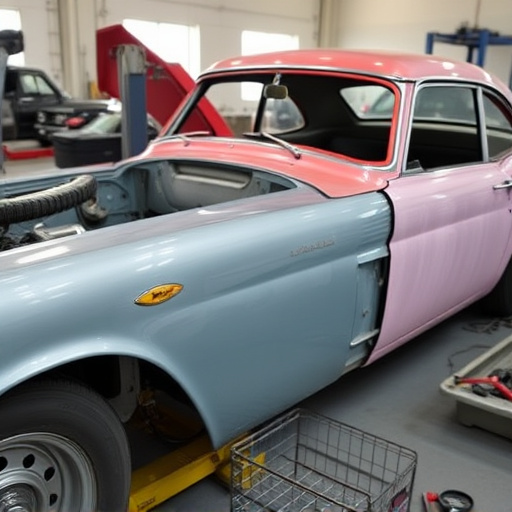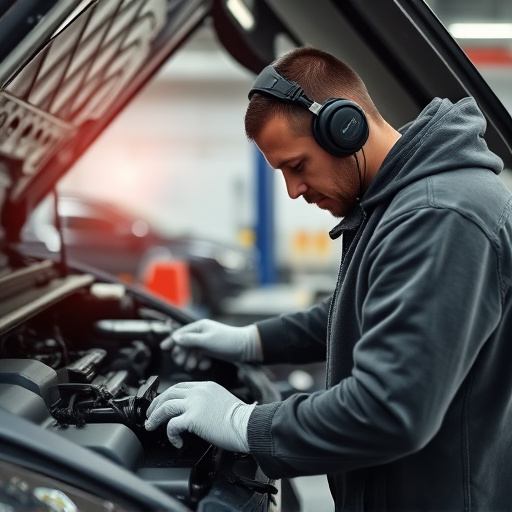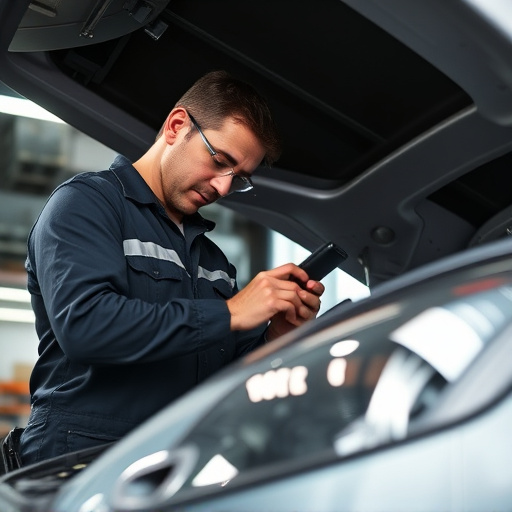In today's eco-conscious era, the automotive industry is shifting towards environmentally safe repair (ESR) techniques to minimize pollution and ecosystem damage caused by traditional methods. This involves training programs empowering professionals in vehicle dent repair and auto body collision repair with greener practices like biodegradable materials, waste reduction, and water-based paints. Strategic planning for effective ESR programs includes curriculum covering environmental impact of traditional methods, eco-friendly technologies, sustainable material handling, and low-emission technology. Integrating green repair training into vocational education will revolutionize the industry, fostering innovation and skilled technicians for sustainable auto glass replacement and fender repair.
In today’s eco-conscious world, adopting environmentally safe repair (ESR) techniques is no longer an option but a necessity. This article explores comprehensive training programs focused on ESR methods, highlighting their growing importance and significant benefits for both industries and the planet. We delve into designing effective training, implementation strategies, and future prospects, offering insights to revolutionize repair practices and foster sustainability. Get ready to discover how these programs can transform the way we maintain and restore our surroundings.
- Understanding Environmentally Safe Repair Techniques: The Need and Benefits
- Designing Comprehensive Training Programs for ESR Adoption
- Implementation Strategies and Future Prospects of Green Repair Training
Understanding Environmentally Safe Repair Techniques: The Need and Benefits

In today’s world, where environmental concerns are at the forefront, adopting environmentally safe repair techniques is no longer an option but a necessity. Traditional auto body repair methods often involve harmful chemicals and substances that contribute to air and water pollution, posing significant risks to both workers and the surrounding ecosystem. Understanding these impacts has sparked a shift towards greener practices, especially in the automotive industry. By focusing on eco-friendly repair techniques, such as using biodegradable materials, minimizing waste, and adopting water-based paints, training programs empower professionals to conduct vehicle dent repair and automotive collision repair while reducing their environmental footprint.
These sustainable approaches offer numerous benefits, including improved air quality, reduced strain on natural resources, and minimized toxic waste generation. Moreover, environmentally safe repair techniques contribute to a healthier workplace by eliminating exposure to harmful substances. As the demand for sustainable solutions grows, professionals in auto body repair are playing a vital role in fostering a greener future, ensuring that their skills remain relevant and highly valued in the ever-evolving landscape of vehicle dent repair and auto body repair.
Designing Comprehensive Training Programs for ESR Adoption

Creating effective training programs for environmentally safe repair (ESR) techniques is a multifaceted process that demands careful consideration and strategic planning. These programs should be designed to educate and empower individuals within the automotive industry, focusing on both theoretical knowledge and practical skills. The curriculum must cover various aspects of ESR, from understanding the environmental impact of traditional repair methods to mastering cutting-edge, eco-friendly technologies.
Comprehensive training should encompass topics such as sustainable material handling, efficient waste reduction strategies, and the latest in low-emission technology for vehicle bodywork repairs. For instance, teaching car repair services professionals about the proper disposal and recycling of automotive fluids, as well as the use of renewable energy sources during repairs, can significantly contribute to minimizing the carbon footprint of the industry. Similarly, focusing on bumper repair techniques that involve less material waste and utilize recycled or biodegradable materials is a step towards adopting more environmentally conscious practices within car repair services.
Implementation Strategies and Future Prospects of Green Repair Training

The implementation of green repair training programs offers a promising path toward a more sustainable automotive industry. One key strategy is to integrate these courses into existing vocational education and training (VET) systems, ensuring that future mechanics and technicians are equipped with eco-friendly practices from the outset. This can involve collaboration between educational institutions, industry experts, and environmental organizations to develop comprehensive curricula covering topics like efficient energy use, waste reduction, and the safe handling of hazardous materials commonly used in auto repairs.
Looking ahead, the future prospects of green repair training appear promising, particularly with growing consumer demand for environmentally conscious services. As awareness expands among vehicle owners about the environmental impact of traditional repair methods, such as excessive use of disposables or toxic chemicals, there will be an increased need for skilled technicians adept in eco-friendly practices. This shift could spur further innovation and investment in training programs focused on sustainable auto glass replacement, fender repair, and other vehicle restoration techniques, ultimately driving a greener automotive sector.
As we conclude, it’s evident that training programs focused on Environmentally Safe Repair (ESR) techniques are a pivotal step towards a more sustainable future. By adopting these practices, we can significantly reduce the ecological footprint of repair operations while fostering a skilled workforce capable of navigating the evolving green landscape. Investing in comprehensive ESR training is not just an environmentally responsible choice but also a strategic move to stay ahead in a market that increasingly values eco-conscious solutions. Let’s embrace these innovative techniques and pave the way for a greener, more resilient tomorrow.














